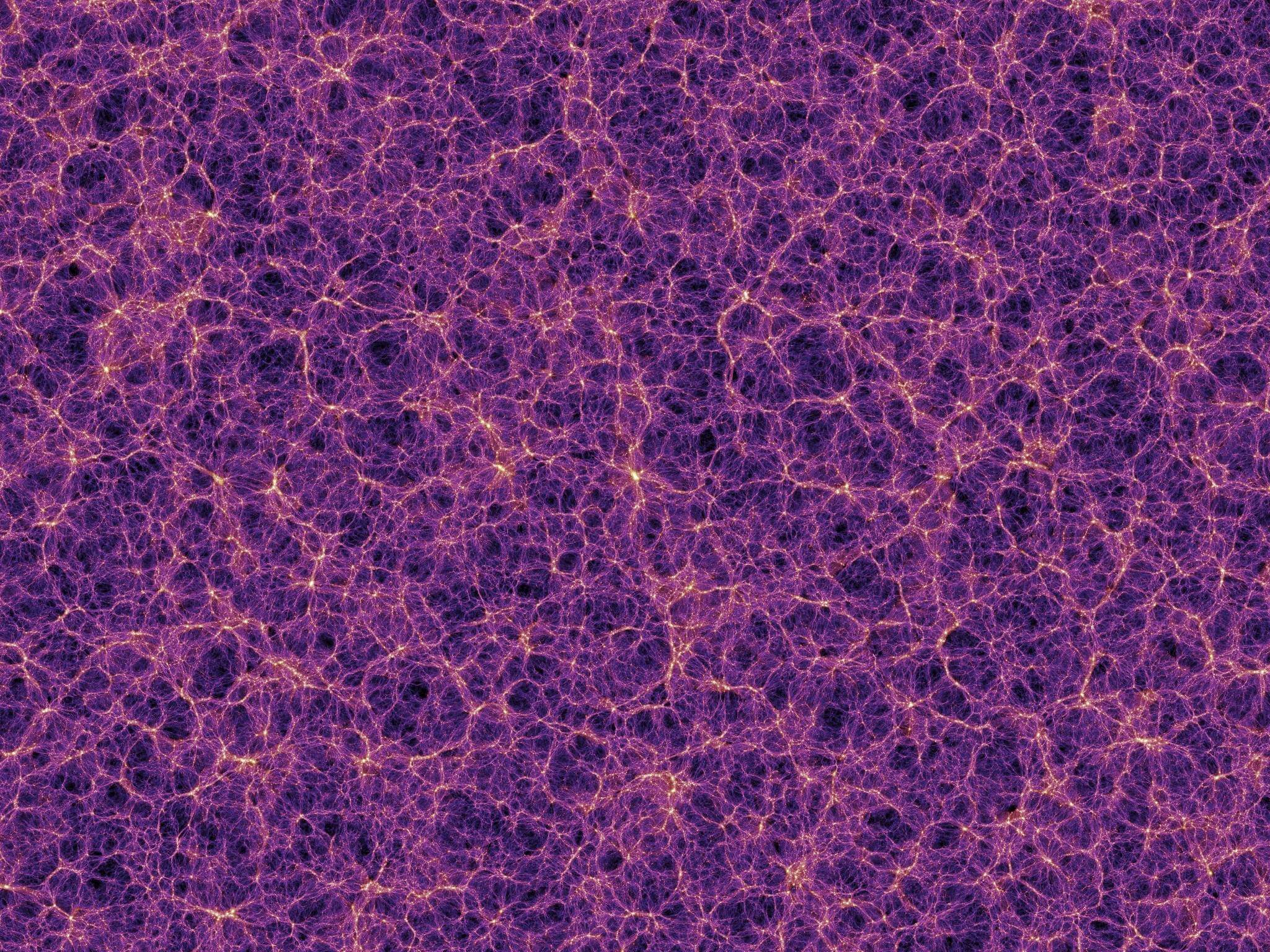Astronomers have long assumed that the billions of galaxies in our Universe are connected by a vast cosmic

Quasar is a class of astronomical objects,which are among the brightest (in absolute terms) in the visible Universe. According to modern concepts, quasars are active galactic nuclei at the initial stage of development, in which a supermassive black hole absorbs surrounding matter, forming an accretion disk. It is the source of radiation, which is extremely powerful (sometimes tens and hundreds of times greater than the total power of all the stars in galaxies like ours).
Recently, astronomers were able to see for the first time a small piece of the cosmic web without quasars. They focusedVLT on a portion of the Hubble Superdeep Field for 140 hours (over six nights from August 2018 to January 2019).
 NASA, ESA, P. Oesch (University of Geneva), and M. Montes (University of New South Wales)
NASA, ESA, P. Oesch (University of Geneva), and M. Montes (University of New South Wales)
Using Multi Unit Spectroscopic Explorer(MUSE), researchers were able to capture light from groups of stars and galaxies scattered by the gas filaments of the cosmic web. This light originated about 2 billion years after the Big Bang.
Observations have shown that potentially morehalf of the scattered light does not come from large bright emitting sources, but from a huge number of previously undiscovered very low luminosity galaxies. This means that they are too dim to be observed individually.
The results support the hypothesis that the young universe consisted of a huge number of small groups of newly formed stars.
 Image after approximately two billion yearsafter the Big Bang in the constellation Fornax. Every point of light — it's a whole galaxy. Blue Cosmic Web Silk was discovered using MUSE. The gas extends over a distance of 15 million light years. This is about 150 times larger than the Milky Way. Credit: ESO/NASA/Roland Bacon et al.
Image after approximately two billion yearsafter the Big Bang in the constellation Fornax. Every point of light — it's a whole galaxy. Blue Cosmic Web Silk was discovered using MUSE. The gas extends over a distance of 15 million light years. This is about 150 times larger than the Milky Way. Credit: ESO/NASA/Roland Bacon et al.
“MUSE observations not only give us a complete mapcosmic web, but also provide new evidence for the existence of extremely small galaxies that played such an important role in the early Universe» — concludes co-author of the work, Michael Maceda from the Leiden Observatory.
In the future, astronomers want to map morelarge fragments of the cosmic web. For this purpose, they are already working on improving the MUSE instrument to provide two to four times the field of view.
Read more
Physicists have created an analogue of a black hole and confirmed Hawking's theory. Where it leads?
Uranus has received the status of the strangest planet in the solar system. Why?
SuperCam scientific instrument from Perseverance rover sends first results to Earth
Very Large Telescope (VLT, rus. Very large telescope)
Hubble Ultra-Deep Field (HUDF) - imagea small region of space, compiled from data acquired by the Hubble Space Telescope from September 24, 2003 to January 16, 2004. The image is a combination of individual images taken with the Advanced Survey Camera, Near Infrared Camera, and Multi-Object Spectrometer, captured at a combined exposure of almost a million seconds (11.3 days). For the survey, an area of the sky with a low density of bright stars in the near zone was selected, which made it possible to better see more distant and dim objects. The image covers an area of the sky with a diameter of just over 3 arc minutes in the constellation Fornax, which is approximately 1 / 13,000,000 of the entire sky area, and contains approximately 10,000 galaxies. The image is oriented so that the upper left corner points north on the celestial sphere.
Cosmic web - threads of dark matter inintergalactic space and the structure formed by them. "Ordinary" matter is also concentrated along these threads. The existence of the cosmic web was predicted theoretically, and it was later observed on at least two occasions.